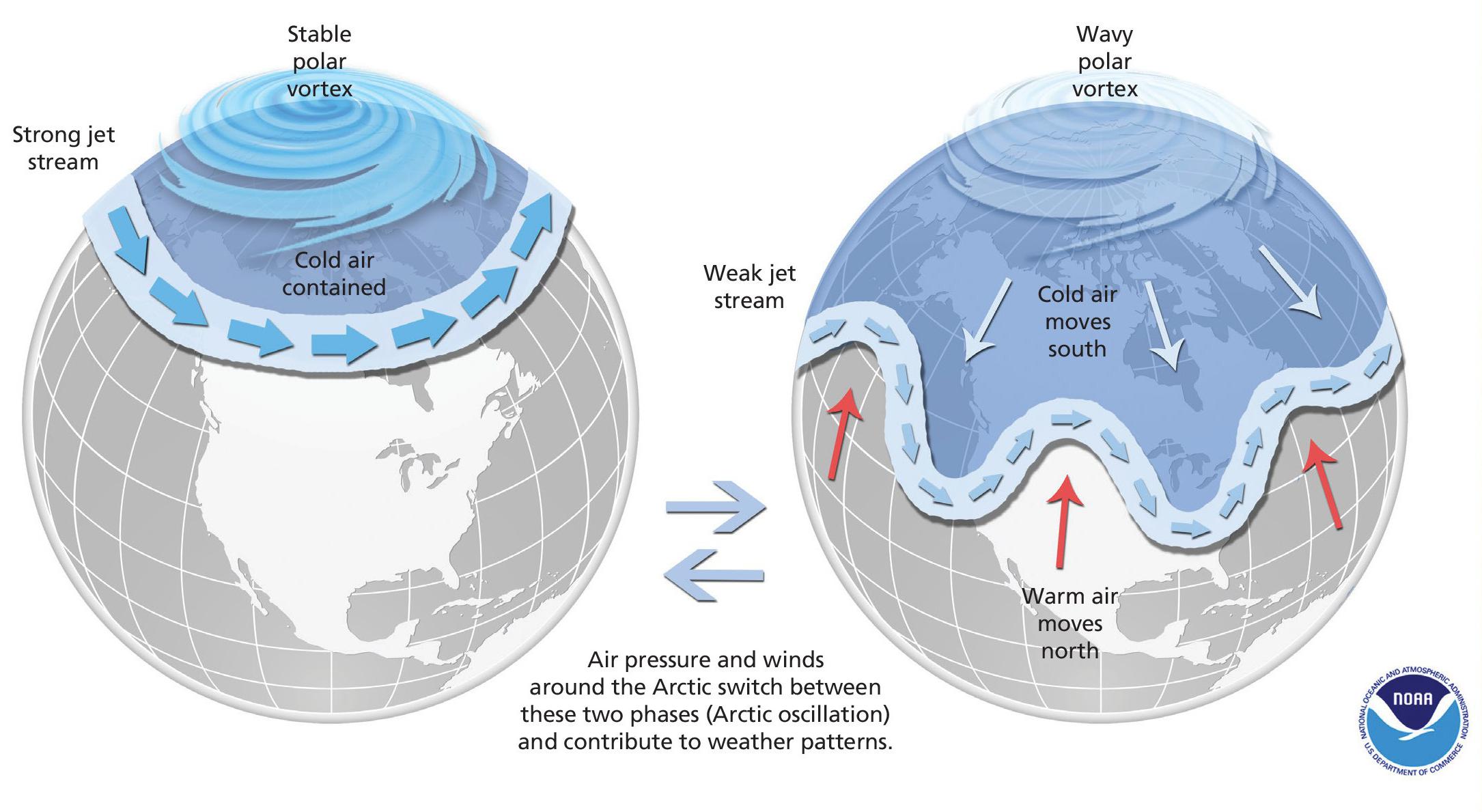
The polar vortex is important in the weather systems of both poles. ‘Vortex’ refers to the counter-clockwise flow around each pole that keeps the coldest air in the high latitudes. It is a planetary-scale circulation, in the high-to mid-latitudes, of low pressure and very cold air, bounded by a strong jet stream. In the northern hemisphere it is centred on the north pole and is called the Arctic polar vortex.
The vortex operates in all seasons, but is strongest during winter when least solar energy is received and the air within the polar vortex is coldest. The thermal contrast between equator and pole is at its maximum in winter. The polar jet stream prevents the movement of air masses, isolating the cold air and keeping it over the Arctic. The vortex weakens in spring as sunlight returns to the polar areas and decreases the temperature gradient between equator and pole. If the polar vortex is stable for much of the Arctic winter it can lead to more extensive sea ice in the Arctic Ocean.
Your organisation does not have access to this article.
Sign up today to give your students the edge they need to achieve their best grades with subject expertise
Subscribe




